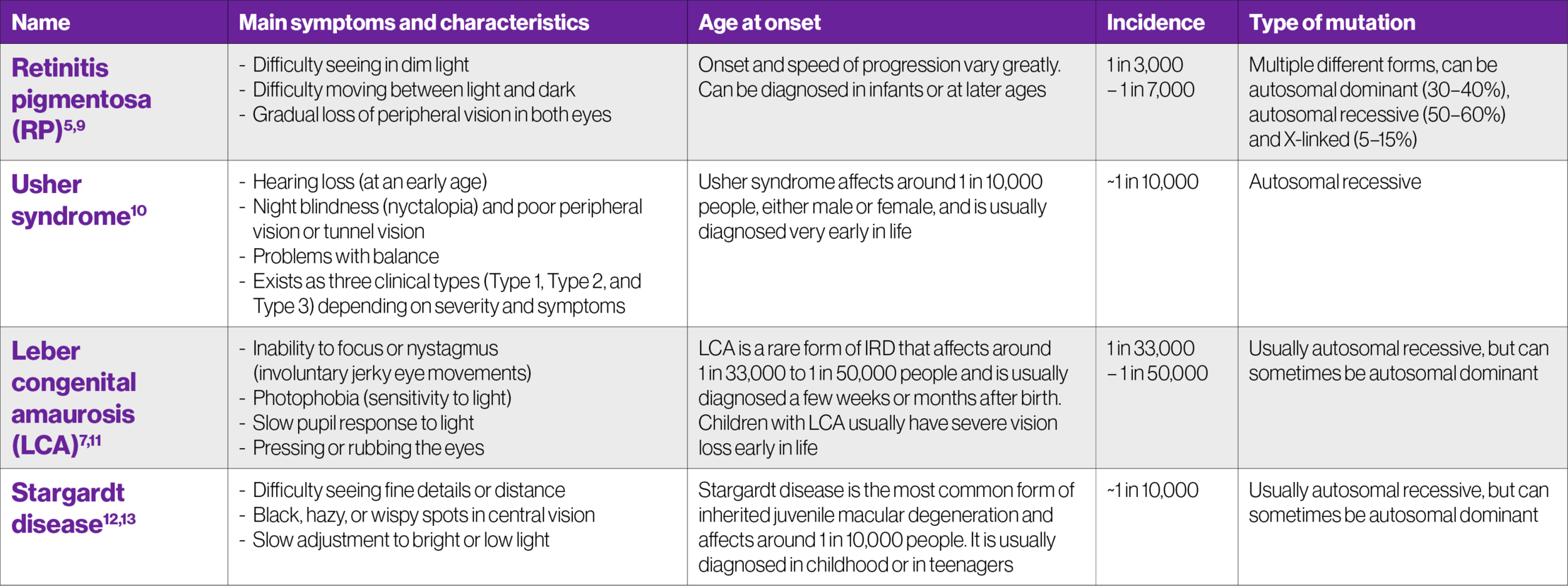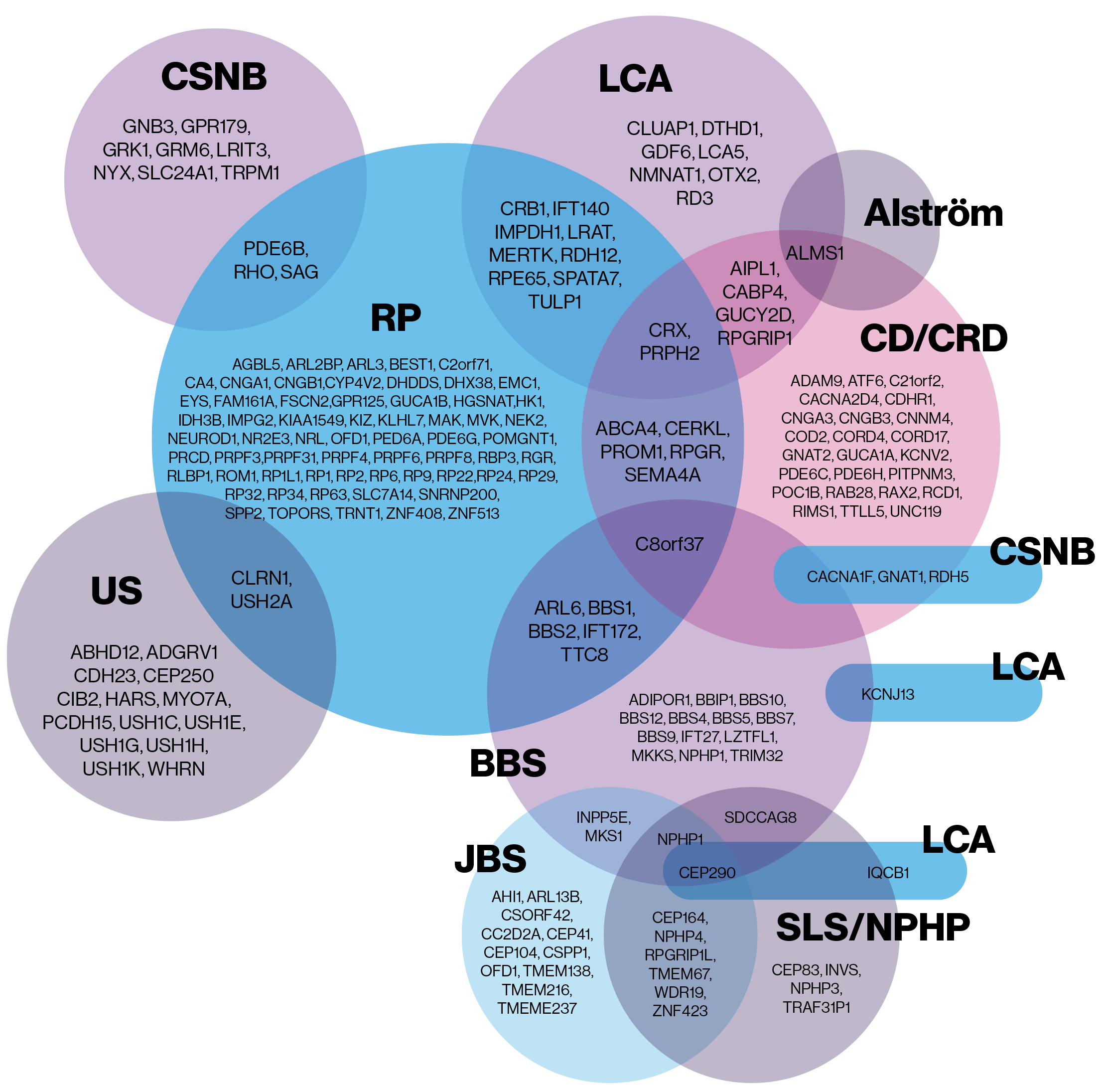What is inherited retinal dystrophy?
A leading cause of sight loss in children and young adults
It looks like you are using an older version of Internet Explorer which is not supported. We advise that you update your browser to the latest version of Microsoft Edge, or consider using other browsers such as Chrome, Firefox or Safari.
A leading cause of sight loss in children and young adults
IRDs are a group of rare diseases associated with an inherited gene mutation affecting the retina that involve deterioration of vision and result in eventual blindness.1–4
Different forms of IRD differ in onset, severity, and progression of the diseases depending on the type of mutation and the cells affected.2,3,5–7
IRDs are characterised by the progressive deterioration of rods and cones.5
There are currently over 260 genes that have been identified as being associated with IRD.8
Different forms of IRD have different inheritance patterns depending on the mutations responsible.9–13 For example, Usher syndrome is always caused by an autosomal recessive mutation, although not always in the same gene.10 Others, such as Leber congenital amaurosis, are usually autosomal recessive inheritance but can also present in autosomal dominant forms.11
Retinitis pigmentosa, which is more of a collection of degenerations, can be autosomal recessive, autosomal dominant or X-linked depending on the specific mutation(s) and genes involved.5,9

IRDs have overlapping signs and symptoms that can make it difficult to be sure about a confirmed diagnosis: a genetic test helps to unlock a diagnosis for your patient2,4

There are over 260 genes currently associated with IRD8

A genetic test is the only way to confirm the genetic cause of a patient’s disease2,4

90% of people with IRD are interested in having a genetic diagnosis for their disease14

A genetic diagnosis can help understand the patient’s prognosis and guide more personalised disease management2,3,5

Gaining more knowledge about their disease helps patients by removing uncertainty and giving them more information about their options4,14

A specific diagnosis can help relieve anxiety and stress that uncertainty about their condition causes15,16
_________________
